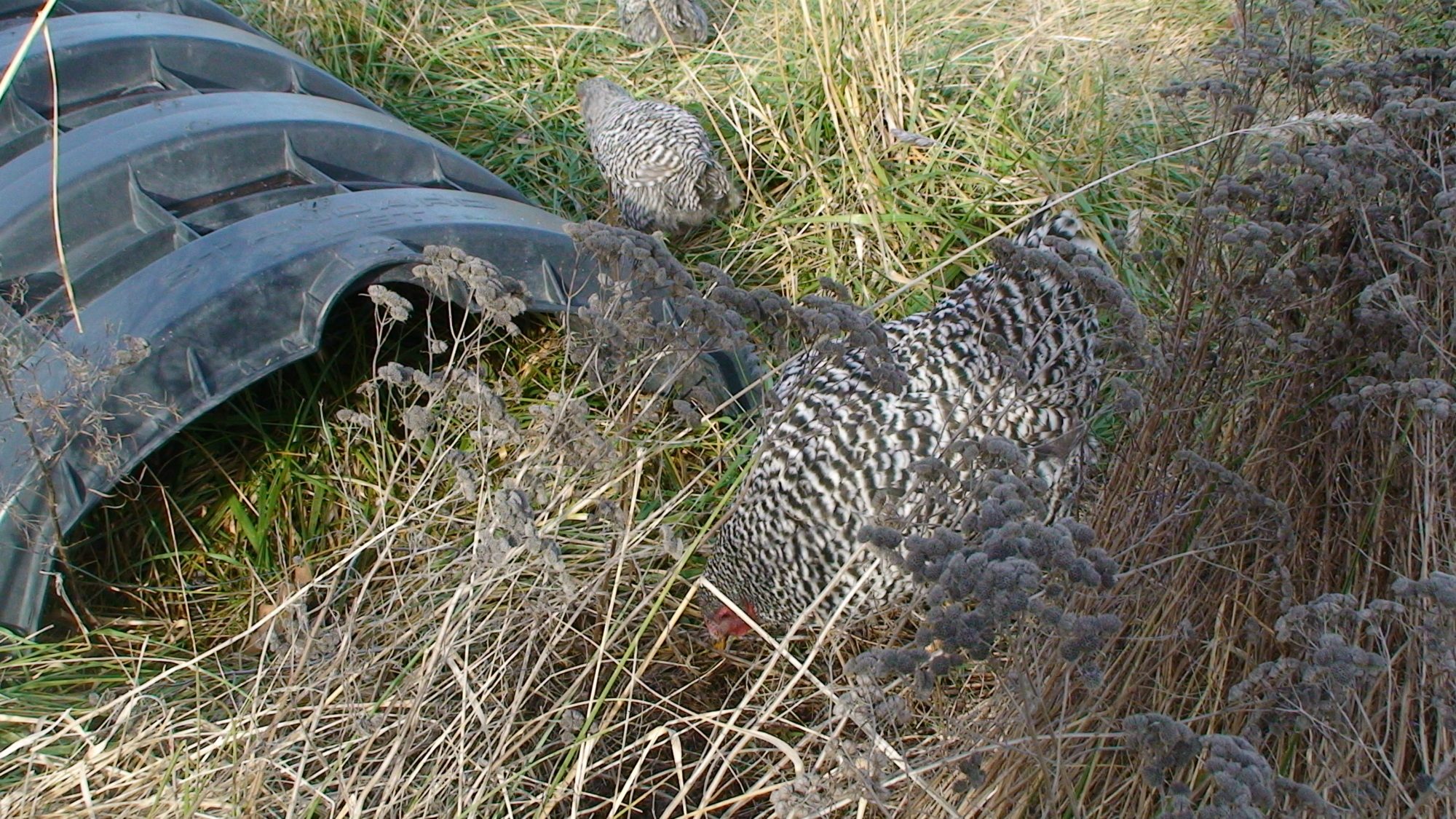I have a Dominique rooster that I got out of Sandhills Preservation, they and the Delaware chicks that I got hatched at the first part of June. That puts them at 5+ months. Neither the Delaware roo or the Dominique rosters crow yet, and the Delaware pullets have not started to lay. They may not until January, and the day length gets a bit longer.
I originally thought I would like to go with the Delaware as a dual purpose breed, and the birds I do have are thick and meaty. Don't know how they will lay. But I have had such a predator problem since I went with no rooster this summer, both aerial and land predators, even though I have a great deal of cover. I am thinking that the Doms' will blend in more. However, the Dom rooster is much smaller than the del.
I am thinking of keeping the Dom rooster, and crossing him over the Delaware girls...... hoping to get a more camouflage bird, maybe with a bit more meat. Any thoughts? I am posting here, as to elicit response from other Delaware interested parties
About 22 to 24 weeks is average for a pullet to start laying eggs.
Why not go with Rhode Island Reds or Barred Plymouth Rocks as dual-purpose chickens? They forage well, and they are about the same size or bigger than the Delaware. Their color is also better than the Delaware for free ranging. And they lay eggs as well or better than either the Delaware or the Dominique. The one advantage the Dominique has is it can fly a little higher than these other breeds to avoid predators. If you cross the Dominique and the Delaware you will eliminate that advantage.





